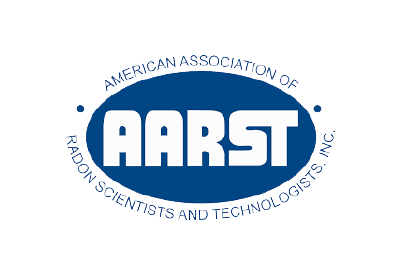
Are you aware of Radon?
Radon gas is the #1 cause of
lung cancer for non-smokers ⚠️
And lung cancer is the most commonly diagnosed type of cancer in Canada.
Radon Mitigation & Removal Systems
When reducing Radon in the home, installing a Radon mitigation system is essential. Our Radon control devices can reduce the Radon in the building by up to 90%. Not only that, but our Platinum Energy Recovery System can also reduce Radon levels by up to 25-30%.
Radon testing
Homeowners and long-term renters should consider having Radon testing performed.
Platinum Air Care offers Radon testing utilizing test kits with independent lab results that will show you the current levels of Radon found within your home.
Radon mitigation
Our Radon removal devices are made with the highest standards and manufactured in the USA by AprilAire.
Our certified technicians and Radon solutions can mitigate up to 90% of Radon out of your home.
Radon relief
You have enough things to worry about, so let us do the work for you.
The protractive treatment of radon is an important consideration when protecting your family’s health. Testing for radon every couple of years also increases the sense of security you need to breathe peacefully.
Let us help you
Radon is a radioactive gas that occurs when certain elements in soil, rocks, and water break down. Radon is colorless and odorless. It enters your home through the cracks and holes in the foundation.
Radon gas is found in every building and high levels are dangerous to our health over long periods of time
Let us help remove and mitigate the radon by installing solutions to redirect the harmful gas out and away from your home.
Start your fight against Radon:
Radon Frequently Asked Questions (FAQ)
-
Radon is a naturally occurring radioactive gas that forms from the breakdown of uranium in soil, rock, and groundwater. It is invisible, odourless, and tasteless, making it impossible to detect without specialized testing.
Radon can seep into homes through cracks in floors, foundations, sump pits, and crawl spaces. Over time, exposure to elevated radon levels can pose serious health risks, including an increased risk of lung cancer.
-
Radon gas enters your home from the soil due to a pressure difference between the indoor air and the ground beneath your home. Because the air pressure inside your house is usually lower than in the soil, radon is naturally drawn in through openings and gaps in your foundation.
Common radon entry points include:
Cracks in basement floors, foundations, and walls
Construction joints and gaps around pipes or wiring
Floor drains, sump pumps, support posts, and wall cavities
Spaces around window casements and service penetrations
Once inside, radon can accumulate to dangerous levels — especially in basements and lower levels with poor ventilation.
-
Yes — radon gas is common throughout Canada. It occurs naturally in all provinces and territories, as it forms from the breakdown of uranium found in Canadian soil and rock.
According to Health Canada, 1 in 6 Canadian homes is estimated to have elevated radon levels above the recommended safety guideline. Because radon is invisible and odourless, testing is the only way to know if your home has high radon concentrations.
-
If your home has elevated radon levels, it's important to take action immediately. Long-term exposure increases the risk of lung cancer, especially in lower levels of the home where radon tends to accumulate.
The most effective solution is to consult a certified radon mitigation specialist like Platinum Air Care. We install radon mitigation venting systems that safely redirect the gas from beneath your home to the outdoors.
For additional protection and improved indoor air quality, consider adding a medical-grade air purification system to help filter other airborne contaminants.
-
Radon exposure is the second leading cause of lung cancer in Canada, following tobacco use. When inhaled over time, radon gas decays into radioactive particles that can damage lung tissue.
The risk is higher for:
Smokers or former smokers
People with long-term exposure in poorly ventilated spaces
Residents of homes with radon levels above 200 Bq/m³
The only way to know your risk is to test your indoor air for radon gas.
-
Platinum Air Care provides radon testing and mitigation services throughout Southwestern Ontario, Canada. Our certified technicians serve both residential and commercial properties in cities such as London, Hamilton, Kitchener, Windsor, St. Thomas, and surrounding areas.
If you're located in Southwestern Ontario and concerned about radon exposure, our team can help with professional testing, mitigation system installation, and indoor air quality solutions.
-
You can test your home using a DIY radon test kit or by hiring a certified radon measurement professional. Health Canada recommends:
A long-term test (90+ days) for accurate results
Testing during colder months when homes are sealed
Placing the test on the lowest level of the home used regularly
Kits are available online, at hardware stores, or through certified radon contractors.
-
Health Canada advises action if your home’s radon level is 200 becquerels per cubic metre (Bq/m³) or higher. The World Health Organization recommends action above 100 Bq/m³.
Homes above 200 Bq/m³ should install a radon mitigation system to reduce health risks. Even homes slightly under the limit may benefit from improved ventilation and radon-reducing techniques.
-
Yes — radon can affect homes of any type, including those built on slab-on-grade foundations, over crawl spaces, or with no basement at all.
Radon enters through openings in the foundation, no matter how deep. Homes with no basement may still have elevated radon levels, especially if they’re tightly sealed and lack proper ventilation.
-
No — radon is a concern in both new and older homes. In fact, modern, energy-efficient homes can trap radon gas more easily due to tighter construction and reduced airflow.
Since radon comes from the ground beneath your home, it can affect any building regardless of age, style, or location. All homes should be tested for radon, even recently built ones.













